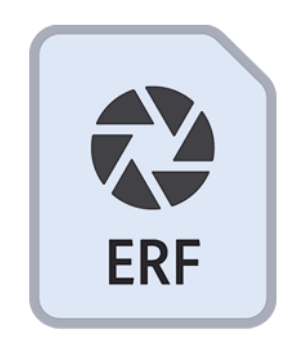.ERF File Extension

BioWare Entity Resource File
| Developer | BioWare |
| Popularity | |
| Category | Game Files |
| Format | .ERF |
| Cross Platform | Update Soon |
What is an ERF file?
‘.ERF’ file extension stands out as a significant component in the realm of gaming and digital media development.
Primarily associated with BioWare, a renowned game development company, the ‘.ERF’ file extension serves as a container format for storing various resources vital for game development and execution.
More Information.
The history of the ‘.ERF’ file extension is intertwined with BioWare’s evolution as a leading force in the gaming industry.
Initially introduced during the development of Baldur’s Gate, the ‘.ERF’ format served as a comprehensive container for storing various resources such as graphics, sound files, scripts, and other essential data required for game functionality.
This format allowed developers to organize and package game assets efficiently, facilitating easier distribution and integration within the game engine.
Origin Of This File.
The roots of the ‘.ERF’ file extension trace back to BioWare, a Canadian video game developer known for its iconic role-playing games (RPGs) such as the Baldur’s Gate series, Neverwinter Nights, and the Mass Effect trilogy.
As BioWare expanded its repertoire and delved deeper into complex game development, the need for a versatile and efficient resource management system became apparent. Thus, the ‘.ERF’ file extension was conceived as a solution to streamline the storage and retrieval of game-related assets.
File Structure Technical Specification.
The structure of ‘.ERF’ files adheres to a specific format optimized for efficient resource management within game development environments.
While the exact specifications may vary depending on the version and implementation, typical characteristics include a header section containing metadata such as file version, resource count, and index table offset.
Following the header, the file is divided into individual resource entries, each comprising a resource type, size, and offset within the file.
Resource types encompass a wide range of assets crucial for game development, including but not limited to:
- Images (textures, sprites)
- Audio files (music, sound effects)
- Scripts (game logic, dialogue)
- 3D models
- Text files (game dialogue, narrative)
The technical specifications of the ‘.ERF’ file format provide developers with a standardized framework for accessing and manipulating game resources, thereby facilitating smoother integration and interoperability within game development pipelines.
How to Convert the File?
Converting ‘.ERF’ files to other formats may be necessary to facilitate compatibility with external tools or platforms.
While direct conversion methods may not be readily available due to the proprietary nature of the format, alternative approaches include:
- Extracting Resources: Utilizing third-party tools or custom scripts to extract individual resources from ‘.ERF’ files into more accessible formats.
- Custom Development: Developing custom conversion utilities tailored to specific requirements, leveraging knowledge of the ‘.ERF’ file structure and resource types.
- Intermediary Formats: Converting ‘.ERF’ files to intermediary formats supported by widely-used game engines or content creation tools, then further converting to the desired format as needed.
It’s essential to consider the legal and technical implications of file conversion, ensuring compliance with relevant copyright laws and maintaining data integrity throughout the process.
Advantages And Disadvantages.
Advantages:
- Efficient Resource Management: By consolidating multiple assets into a single container, the ‘.ERF’ format simplifies resource organization and reduces file clutter.
- Streamlined Distribution: Packaging game resources into ‘.ERF’ files streamlines the distribution process, making it easier to deploy updates and expansions.
- Enhanced Performance: Accessing resources from a single container can improve loading times and overall game performance.
Disadvantages:
- Limited Accessibility: ‘.ERF’ files are primarily intended for use within BioWare’s game development ecosystem, which may limit compatibility with other platforms and tools.
- Potential for Bloat: As all resources are bundled together, there is a risk of increased file size and unnecessary duplication of assets, leading to potential performance issues.
- Dependency on BioWare Tools: Developing and working with ‘.ERF’ files often requires familiarity with BioWare’s proprietary tools and workflows, which may present a barrier to entry for new developers.
How to Open ERF?
Open In Windows
- Utilize BioWare’s official development tools or third-party utilities designed for working with ‘.ERF’ files.
- Explore compatibility layers or emulators to run BioWare’s development environment on Windows.
Open In Linux
- Experiment with Wine or similar compatibility layers to run Windows-based BioWare tools on Linux distributions.
- Explore open-source alternatives or community-developed utilities tailored for Linux environments.
Open In MAC
- Employ virtualization software to run Windows-based BioWare tools within a MacOS environment.
- Investigate community-developed solutions or alternative tools compatible with MacOS for accessing ‘.ERF’ files













